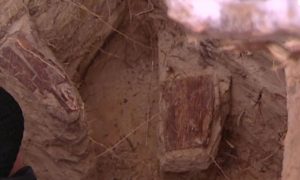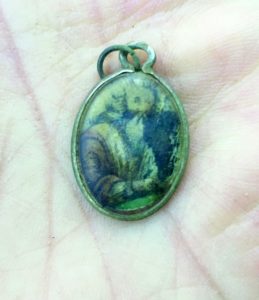A team of Polish and Jewish archaeologists discovered a filled-in tunnel during works at the former World War II German concentration camp at Sobibór, eastern Poland. This is probably the tunnel used by a group of prisoners to escape from the Sonderkommando barracks.

The researchers encountered remains of a tunnel that served for escape and after discovery was filled in. The depth of the tunnel reaches 1.8 metres. It has a narrow corridor, strengthened with wood. The discovery is significant because it confirms the stories about the prisoners preparing their escape. Experts state that exact facts about the famous prisoner uprising in 1943 from the concentration camp are hard to determine, because the Germans levelled the camp after subduing the revolt.

The Nazi German extermination camp in Sobibór was a place where up to 200000-250000 people were murdered in gas chambers fed by the exhaust of a large petrol engines. On October 14th 1943, about 600 prisoners tried to escape of which half succeeded in crossing the fence, and of whom around 50 evaded capture. Shortly after the Germans subdued the revolt the camp was closed, the earth was bulldozed and planted over.

The experts knew about stories about construction of such tunnel and basing on them they were able to find the structure. The tunnel itself was discovered in 1943, before the escape happened. It was filled in and the prisoners were executed. About 30 metres of the tunnel were studied so far. It was constructed within a sandy ground and needed much engineering skill as well as wood for strengthening of the walls. Possibly the prisoners took the wood that was destined for heating. The wooden structures partially survived although in poor state of preservation.

Archaeological work also focused on surveying the area and finding the barrack that was used by Nazis to cut women’s hair before sending them to the gas chambers. A typical mass find of this area was a large number of bobby pins. The researchers also studied the area where the Sonderkommando barracks and gas chambers were located.

(after TVP Info, Dziennik Wschodni & Wojciech Mazurek)